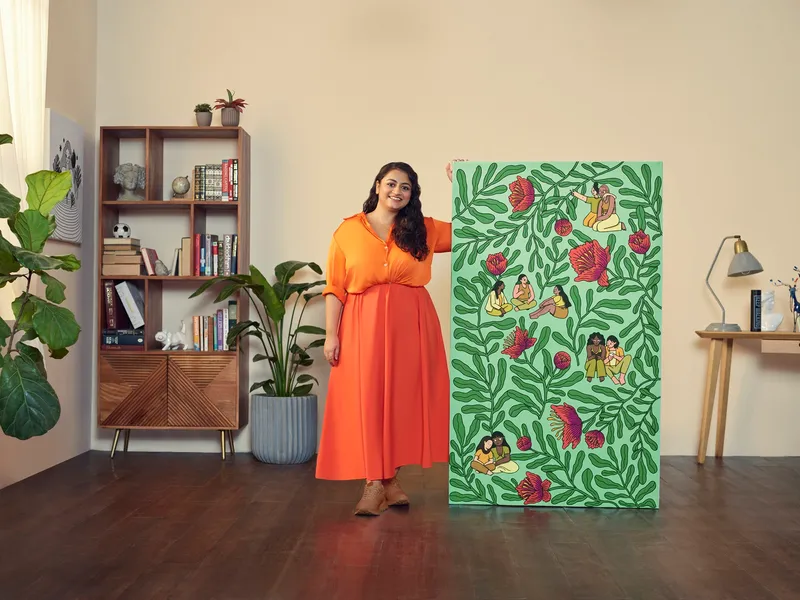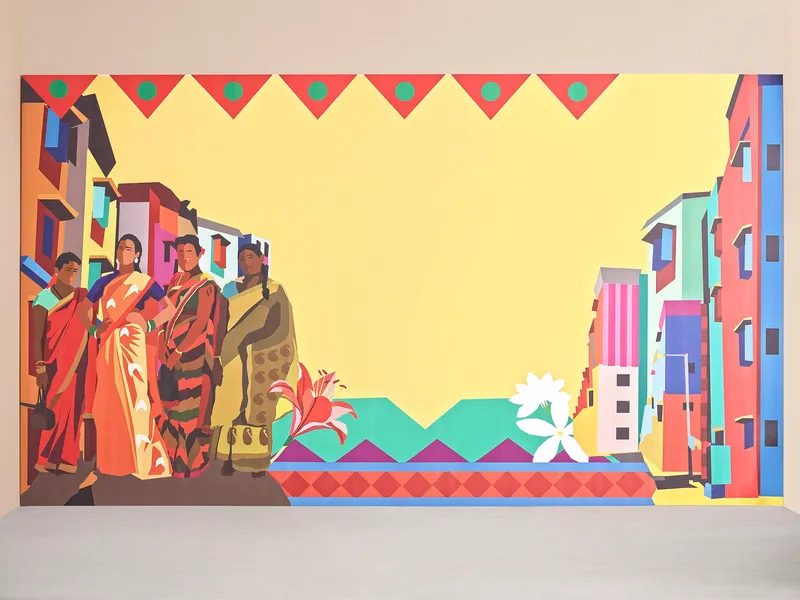Art for inclusion: The Aravani Art Project is helping reclaim public spaces for the trans community
Helmed by Bengaluru-based Poornima Sukumar, The Aravani Art Project is empowering the transgender community to make themselves seen and heard through visual art.
Diversity and inclusion may be oft-used terms. However, in reality, marginalised communities have a long way to go to feel valued and accepted.
The transgenders—known as the ‘third gender’ and individuals who identify themselves as a part of this community—are often alienated and denied equal social and economic opportunities in society.
According to a study conducted by the National Human Rights Commission in 2018, 96% of transgenders have to resort to sex work or begging for survival. The study also highlighted how 92% of transgenders are deprived of their right to participate in any kind of economic activity.
Unfortunately, the social stigma and perceived notions about the community prevent them from being embraced by the mainstream. This motivated Bengaluru-based artist Poornima Sukumar when she assisted a London-based filmmaker in a documentary on Indian transgenders in 2014.

During this stint, Sukumar forged close friendships with some trans women and observed the kind of scrutiny and phobia they were subjected to in society.
The experience prompted her to initiate the Aravani Art Project in 2016 to empower transgender artists across Indian cities to share their stories through public art.
The art collective, run by close to 40 trans people, cis women, and cis men, has worked on research projects, drama walks, digital projects, comics and graphic novels, canvas paintings, workshops and, most recently, mixed media art using waste cloth to create large pieces.
“My interaction with the transgender community made me realise how our society is less informed. The stigma and discrimination against them have been and are still so prominent. The art project is designed in a way that we create a safe space by painting a wall that will reflect upon our conversations with the community,” Sukumar tells YS Life.
Besides splashing walls across cities, including Mumbai, Delhi, Kolkata, Bengaluru, and Pune, among others, the collective has previously collaborated with brands like Uber, Wingreens World and, now, Walkers & Co. on a billboard project with artist Pearl D’Souza to offer unique and compelling perspectives on life, identity, and progress.

Artist Pearl D'Souza
Creating safe spaces
The term ‘Aravani’ is a non-patronising term used for the transgender community. In line with its name, the project has always been about organically creating a space for the community by helping them voice their expressions mainly through visual art.
Each public project portrays a transgender person enhanced by motifs from a particular culture. For instance, in Pune, the Paithani saree is in focus, while the jasmine flower is a prominent symbol in Chennai.
“We wanted art to be a means of bringing in social awareness and storytelling. Art could enable the transgender community to access and understand their involvement in the society, encouraging them to speak freely about their rights and concerns. No change or empowerment is possible if you do not involve the community and make them a part of the process,” explains Sukumar.
Its first project was a social experiment in January 2016—a mural art installation that consisted of painting in Bengaluru’s KR Market. It attempted to camouflage the people from the transgender community to create a sense of inclusivity by metamorphosing the wall as a society.
But why murals?
“Murals happen in public spaces, where a lot of transgender and marginalised people go through discrimination and, sometimes, violence. Allowing the people to view and change perspectives while creating art in public has created impact and space for organic conversions to take place,” adds Sukumar.
In June 2016, Aravani Art Project chose Dharavi—one of Asia’s biggest slums that houses a sizable population of transgenders. Though the Mumbai monsoons were challenging, the team collaborated with Humsafar Trust, Mumbai, to paint a wall—a common meeting place for most young adults and children of Dharavi.
That’s not all. In 2019, the art collective participated in the Serendipity Arts Festival in Goa, showcasing an installation titled ‘Not just faces’, depicting 60 portraits as canvases of all the trans women they had worked with, painted by women from the transgender community.

“Art has always been known to be a powerful tool to kickstart a movement and to bring about slow change. We are creating a space in the art world and the society at large by reclaiming those spaces otherwise very influenced by class. By also reclaiming an identity as an artist, the members feel very proud that gender doesn’t come before what they love doing the most,” reiterates Sukumar.
Murals to billboards
After making noise through murals and art installations, Aravani Art Project recently collaborated with Walkers & Co. for a campaign that promises to offer visibility to emerging artists working in the space of inclusion, diversity and empowerment of the disenfranchised.
Through this movement, billboards in 10 cities across India will showcase the stories or progress of the Aravani Art Project and Pearl D’Souza, giving them a reach of over four million.
How has the transition been from murals to billboards?
Sukumar says, “I won’t be modest here. We love occupying large spaces—whether it is a mural or a billboard.”
D’Souza, too, has been an advocate of gender representation and creating safe spaces for everyone to be heard, seen, and have a voice. Thus, she is a fitting choice for the campaign.
“Whether it be mental health or queer identities or caste-based issues, there are people whose voices are not heard or intentionally suppressed. Being able to have an online platform to champion these voices and ensure stories like these have wider reach has been important in my journey as an artist,” explains D’Souza, who runs ‘Paul’s Print Shop’—an online store that sells her art.
D’Souza also ensures that more taboo subjects come to the forefront, which has been her guiding policy for this campaign as well. “This allows people to no longer pretend these issues don’t exist. Art makes people question and re-learn what they once might have thought of as an absolute truth,” she adds.
The way forward
While awareness about equal representation of marginalised communities has increased, these individuals continue to face struggles, including harassment and social neglect. Some of them are unwilling to even find jobs after what they’ve been through all their lives.
Undoubtedly, the Aravani Art Project has made several strides over the last few years. However, the road to progress has been fraught with challenges, particularly inflicted upon by transphobic people.
The larger problem for such an art collective is to sustain itself and find work to stay afloat.
“We are always on the lookout for projects, and we have been fortunate and grateful to have been able to ride along for eight years now,” says Sukumar.
The team believes its impact has been massive, something that goes far beyond statistics. Sukumar points out that one of its core team members, Shanthi Sonu—who belongs to the trans community—is thrilled that people are looking beyond stigma and myths, making them believe that they are capable of doing beautiful things too.
It is these stories that keep them going!
The future may have its ups and downs, but the Aravani Art Project has big dreams.
“We are always on a journey with the project. Sometimes smooth, sometimes demanding, and then there are rough times. We are becoming more aware of the fact that many people from marginalised backgrounds need this support, and we are opening up our group towards all genders,” concludes Sukumar.
Edited by Suman Singh







